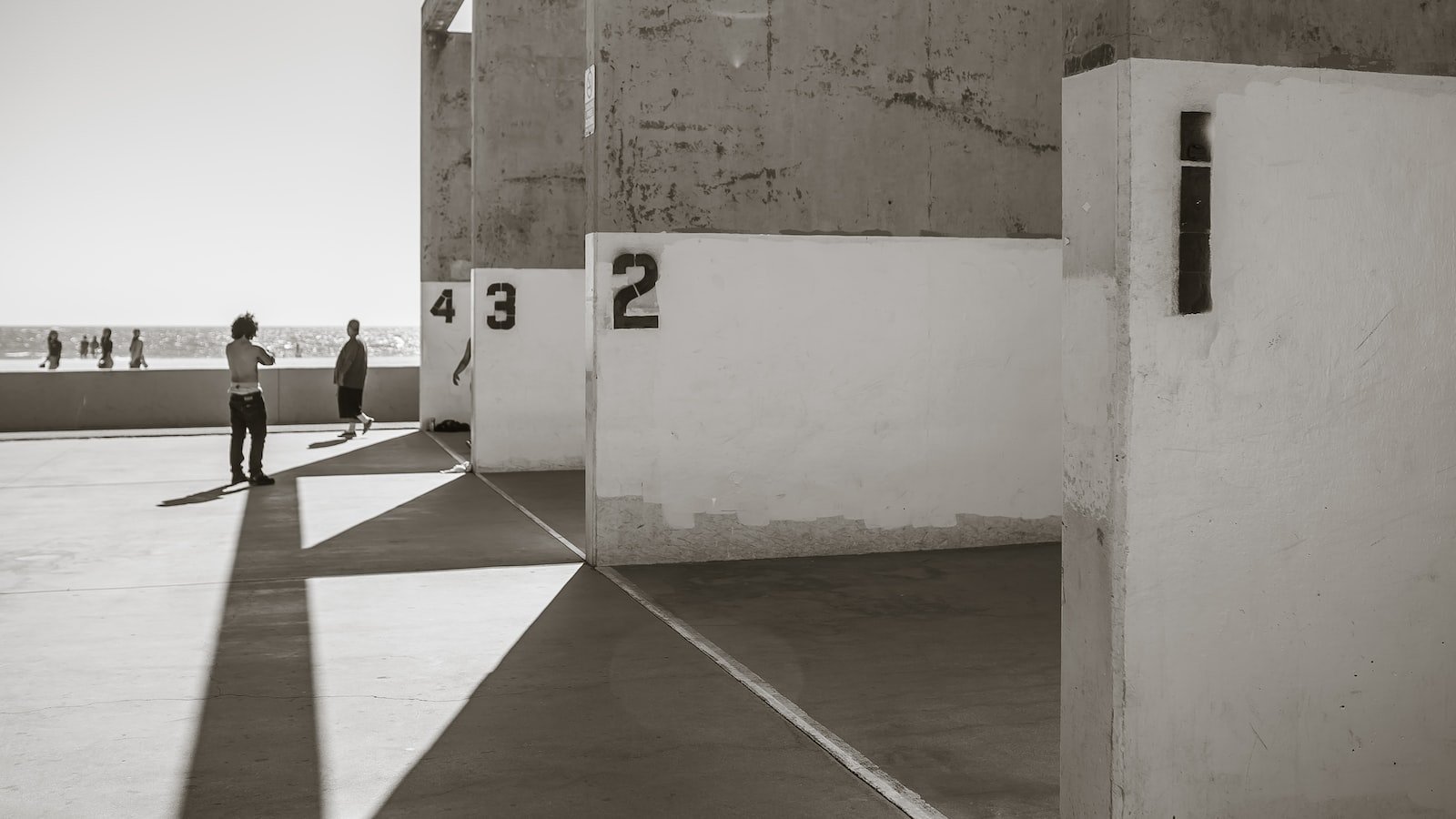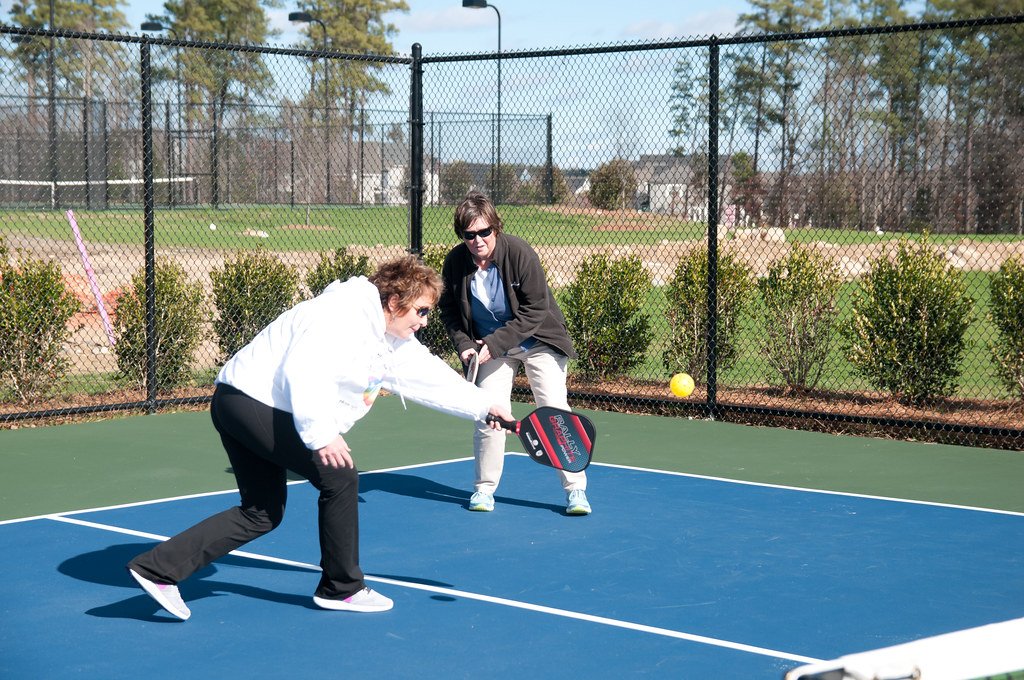A silent revolution has been taking place on the courts, capturing the hearts of both old and young, as people fervently rally over a delicate yet fiercely competitive game—pickleball. As this quirky sport gains popularity worldwide, one vital element often flies under the radar, the unsung hero that holds the balance between triumph and defeat: the pickleball net. While it may appear no more than a mundane divider for the uninitiated, this humble apparatus governs the game with strict regulations, including its height and composition. Are you intrigued to dive into the captivating world of pickleball nets and uncover the fascinating details that elevate this unassuming fixture to the forefront of pickleball’s intriguing dynamics? Join us as we explore the height requirements, intricacies, and other enticing facts that lurk behind the scenes of the pickleball net.
Table of Contents
- An Exploration of Pickleball Net Height
- Understanding the Impact of Net Height on Pickleball Gameplay
- Optimal Pickleball Net Height: A Guide for Players and Venues
- Factors to Consider When Adjusting Pickleball Net Height
- Enhancing the Pickleball Experience: Tips for Maintaining the Perfect Net Height
- Q&A
- Insights and Conclusions

An Exploration of Pickleball Net Height
When it comes to a game of pickleball, net height plays a crucial role in determining the overall experience and fairness of the match. The rules dictate that the net should be positioned at a specific height to ensure a level playing field for all players, regardless of their skill level.
Standard Height:
The standard net height for pickleball is 36 inches at the sidelines and 34 inches at the center. This height allows for an appropriate challenge while still keeping the game enjoyable for players of all ages and abilities. It strikes a balance between accessibility and competitiveness, offering a level of competition that can be enjoyed by beginners and seasoned players.
Effect on Gameplay:
The height of the pickleball net has a direct impact on the pace, strategy, and style of the game. A lower net challenges players to utilize quick reflexes, agility, and precise shot placements. It encourages more skillful dinking and soft shots, making the game focus on finesse and strategy rather than power. On the other hand, raising the net height increases the speed and aggressiveness of the game, requiring players to have greater strength and power in their shots.
Modifications and Variations:
While the standard net height is widely accepted and used in official tournaments and recreational play, there are variations that can be explored to customize the game. Some players prefer a slightly lower net to accommodate beginners or players with physical limitations, while others may raise it slightly to add an extra challenge. However, it’s important to maintain fairness and communicate any modifications with fellow players to ensure a consistent and enjoyable experience for everyone.

Understanding the Impact of Net Height on Pickleball Gameplay
Pickleball is a rapidly growing sport that combines elements of tennis, badminton, and ping pong. One crucial factor in is the effect it has on the pace and strategy of the game.
The net height in Pickleball is specifically designed to encourage volleying and add an element of challenge to gameplay. A lower net height requires players to be more precise in their shots, as there is a higher chance of hitting the net. On the other hand, a higher net height can make it easier for players to clear the net, leading to longer rallies and more strategic play. Consequently, the height of the net in Pickleball significantly influences the overall flow and dynamics of the game.
Adjusting the net height can enhance the competitiveness and skill level of the sport. When the net is set lower, it favors aggressive players who excel at power shots and net play. Conversely, a higher net height tends to benefit defensive players who rely on precision and finesse to outmaneuver their opponents. Overall, net height in Pickleball plays a fundamental role in shaping the game’s style and tactics employed by players.
Key Points to Consider:
- Lower net height requires more accuracy in shots
- Higher net height encourages longer rallies
- Net height affects playing styles: power shots vs. finesse
- Adjusting net height can enhance competitiveness and skill levels

Optimal Pickleball Net Height: A Guide for Players and Venues
Optimal Pickleball Net Height
When it comes to playing pickleball, having the proper net height is essential for an enjoyable and fair game. It not only affects the pace and trajectory of the ball but also impacts players’ strategies and overall gameplay. To ensure a level playing field for players and venues, understanding the optimal pickleball net height is crucial.
According to official pickleball rules, the net height at the center should measure 36 inches (91 cm). However, it’s important to note that the net may sag slightly in the middle due to tension and the weight of the ball during play. Aim for a net height range between 34 to 36 inches (86 to 91 cm) to accommodate for any sagging that may occur during intense rallies.
For players who enjoy a crisp, fast-paced game, a net height on the higher end of the range can promote aggressive and powerful shots. Conversely, a slightly lower net height can encourage more strategic play, finesse, and precision. It’s important to find a balance that suits the skill level and desired playing style of the participants.
- Remember to regularly check the net height before and during gameplay to ensure fair and consistent play.
- When setting up a pickleball court, invest in a high-quality net that allows easy adjustments and proper tensioning.
- Communicate with fellow players or venue managers to agree upon the ideal net height for a satisfying pickleball experience.
Factors to Consider When Adjusting Pickleball Net Height
Adjusting pickleball net height is an important aspect of the game that requires careful consideration. There are several factors that players, organizers, and officials must take into account to ensure a fair and enjoyable playing experience.
1. Court Surface: The type of court surface plays a crucial role in determining the net height. A hard surface like concrete or asphalt may require a slightly higher net height than a softer surface like grass or sand. This is because a softer surface may cause the net to sag, affecting the overall gameplay.
2. Player Skill Level: The skill level of the players participating in the game also influences the net height. Beginners may find it easier to play with a slightly lower net height, as it allows for a more forgiving margin of error. On the other hand, advanced players prefer a higher net height to challenge their skills and encourage strategic play.
3. Age and Physical Abilities: It is important to consider the age and physical abilities of the players when adjusting the net height. Younger players or individuals with limited mobility may require a lower net height to ensure they can actively participate and enjoy the game. Similarly, older players may benefit from a slightly lower net height to accommodate their abilities.
4. Competitive Standards: The net height in pickleball is set according to the competitive standards established by organizations such as the USAPA (United States of America Pickleball Association). These standards ensure uniformity across different tournaments and venues, guaranteeing a fair playing field for all participants.
5. Safety Considerations: Safety is paramount in any sporting activity. When adjusting the net height, it is essential to ensure that it does not pose a risk to the players. The net should be securely fastened and at an appropriate height to prevent any potential accidents or injuries during gameplay.
By taking these factors into consideration, you can properly adjust the pickleball net height to create an optimal playing environment for all participants. This attention to detail will enhance the overall experience and contribute to the enjoyment of the game.
Enhancing the Pickleball Experience: Tips for Maintaining the Perfect Net Height
When it comes to playing pickleball, maintaining the perfect net height is crucial for a seamless gameplay experience. Whether you’re playing for fun or actively participating in competitions, here are some valuable tips to enhance your pickleball experience:
Bullet Point List:
- Regular Inspection: Regularly check the net height using a measuring tool to ensure it meets the official standards of 34 inches at the center of the court. Adjust the height if necessary to prevent any unfair advantage.
- Even Tension: Make sure the net is evenly tensioned across the entire width of the court. Uneven tension can affect the bounce of the ball and impact the game’s fairness.
- Proper Anchoring: Ensure the net is properly anchored and secured to keep it stable during intense gameplay. Unstable and wobbly nets can cause disruptions and decrease the enjoyment of the game.
- Weather Conditions: Be mindful of the weather conditions. High winds can alter the net’s height, requiring regular adjustments to maintain the right level. Consider using windbreakers or windscreen around the court to minimize wind interference.
- Team Effort: Encourage all players involved to be diligent in maintaining the net height. Establish a culture where everyone feels responsible for checking and adjusting the net before starting each match.
By implementing these tips and incorporating them into your pickleball routine, you can ensure a consistent and enjoyable playing experience with fair and accurate net heights. So, let’s keep those nets perfectly aligned and elevate the pickleball experience to new heights!
Q&A
What is the official height of a pickleball net?
The official height of a pickleball net is 36 inches at the sidelines and 34 inches at the center of the court.
Why is the net height different in the center versus the sidelines?
The net is slightly lower in the center to allow for easier play in the non-volley zone, encouraging volley shots rather than strong smashes.
What material is the pickleball net made of?
Pickleball nets are typically made of durable nylon or polyester material, which is lightweight and resistant to weather conditions.
Can the net height be adjusted?
No, the net height should always remain consistent at the official measurements to ensure fair play. Altering the net height could give players an unfair advantage.
How wide is the pickleball net?
The net spans the entire width of the court, measuring 22 feet in total. It separates the two halves of the court.
Is the net positioned above the non-volley zone?
Yes, the net is positioned above the non-volley zone, also known as the kitchen. This prevents players from standing within the zone and hitting volleys directly off the serve.
What happens if the ball hits the net during play?
If the ball hits the net on a serve and then lands within the correct court, it is considered a ”let” and the serve is retaken. If the ball hits the net during a rally, it is counted as a fault and the opposing team earns a point.
Are there any other interesting facts about pickleball nets?
Some pickleball nets have built-in tension systems, which allow for quick and easy adjustments. Additionally, portable pickleball nets are available for players to set up the game in various locations, making it a versatile sport for everyone to enjoy.
Insights and Conclusions
And there you have it, a delightful journey into the world of pickleball nets, where height meets fun facts! We hope this article has served as a valuable resource in unraveling the mysteries that shroud this integral component of the game.
From the standard regulation height of 36 inches to the slight variations found in some recreational play, we’ve explored the net’s significance in creating fair and balanced gameplay. We’ve also learned how the net’s composition plays a crucial role in its durability, ensuring endless hours of spirited matches.
But beyond the technicalities, let us not forget the immense joy that resonates within the heart of every pickleball player as they approach the net, paddle in hand. It symbolizes the thrill of competition, the camaraderie shared with friends and opponents alike, and the unmistakable sense of belonging to a vibrant and ever-growing community.
So, as you continue to embark on your pickleball adventures, be it in a friendly backyard match or a heated tournament, let the pickleball net stand as a testament to the sheer passion and dedication that fuels this exciting sport. It’s not just a mere measurement; the net personifies the spirit of respect, cooperation, and pure enjoyment that defines the magical world of pickleball.
So go forth, dear reader, armed with newfound knowledge, and let the pickleball net be your steadfast companion. Let it guide you through giggles, volleys, and triumphant moments, always reminding you of the delightful bond between players and the invaluable memories created on those hallowed pickleball courts.
And remember, whether you find yourself on the winning or losing side of the net, the true victory lies in the sheer pleasure of the game itself. So let us celebrate this humble yet remarkable entity — the pickleball net — and revel in the joy it brings to the hearts and smiles of pickleball enthusiasts around the world.
As an affiliate, my content may feature links to products I personally use and recommend. By taking action, like subscribing or making a purchase, you’ll be supporting my work and fueling my taco cravings at the same time. Win-win, right?
Want to read more? Check out our Affiliate Disclosure page.




